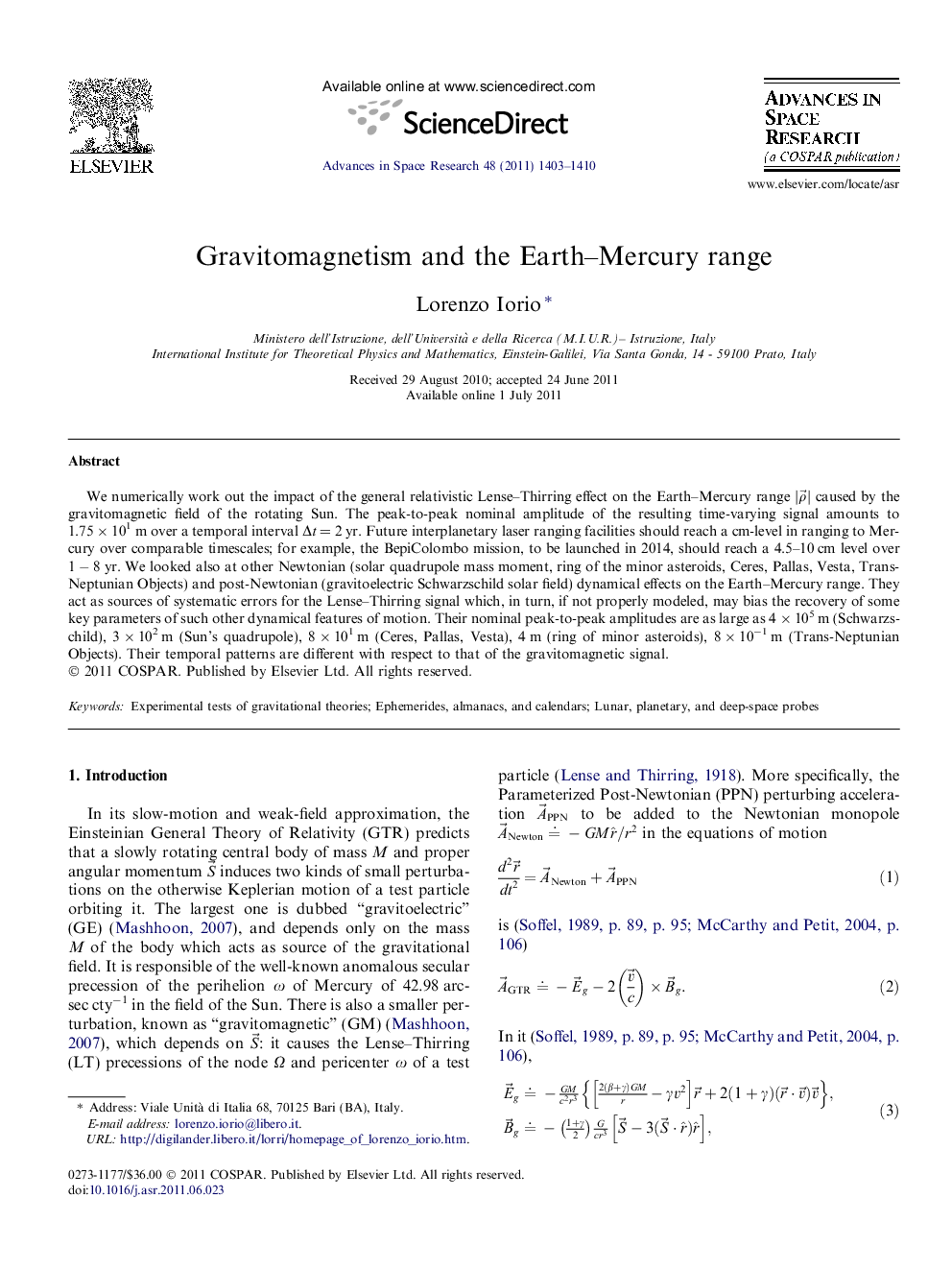| Article ID | Journal | Published Year | Pages | File Type |
|---|---|---|---|---|
| 1765750 | Advances in Space Research | 2011 | 8 Pages |
Abstract
We numerically work out the impact of the general relativistic Lense-Thirring effect on the Earth-Mercury range |Ïâ| caused by the gravitomagnetic field of the rotating Sun. The peak-to-peak nominal amplitude of the resulting time-varying signal amounts to 1.75 Ã 101 m over a temporal interval Ît = 2 yr. Future interplanetary laser ranging facilities should reach a cm-level in ranging to Mercury over comparable timescales; for example, the BepiColombo mission, to be launched in 2014, should reach a 4.5-10 cm level over 1 â 8 yr. We looked also at other Newtonian (solar quadrupole mass moment, ring of the minor asteroids, Ceres, Pallas, Vesta, Trans-Neptunian Objects) and post-Newtonian (gravitoelectric Schwarzschild solar field) dynamical effects on the Earth-Mercury range. They act as sources of systematic errors for the Lense-Thirring signal which, in turn, if not properly modeled, may bias the recovery of some key parameters of such other dynamical features of motion. Their nominal peak-to-peak amplitudes are as large as 4 Ã 105 m (Schwarzschild), 3 Ã 102 m (Sun's quadrupole), 8 Ã 101 m (Ceres, Pallas, Vesta), 4 m (ring of minor asteroids), 8 Ã 10â1 m (Trans-Neptunian Objects). Their temporal patterns are different with respect to that of the gravitomagnetic signal.
Related Topics
Physical Sciences and Engineering
Earth and Planetary Sciences
Space and Planetary Science
Authors
Lorenzo Iorio,
